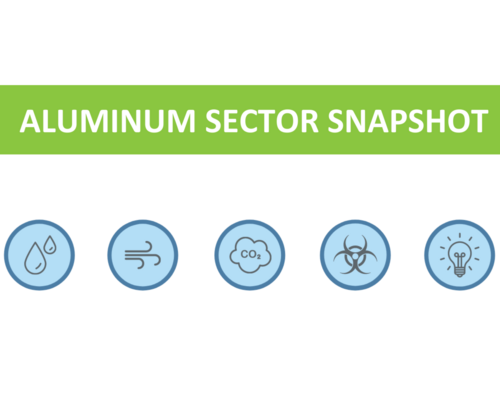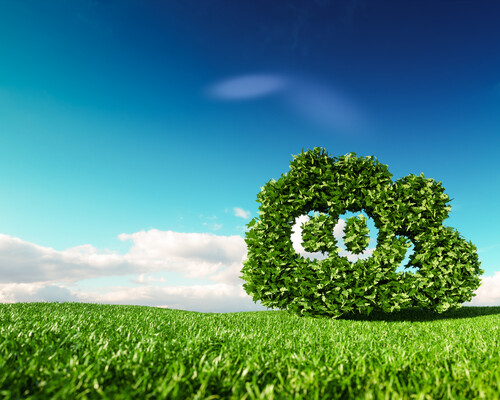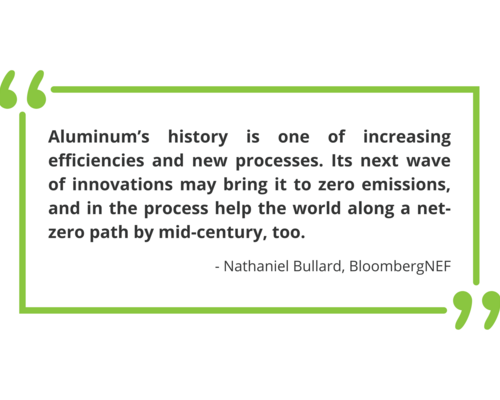
Climate
Lightweight, durable and infinitely recyclable, aluminum can help solve many global energy and climate challenges. The U.S. aluminum industry is continuously innovating to reduce energy use and carbon impacts of production.
Aluminum is a big part of a greener future.
Aluminum Climate Agenda
The U.S. aluminum industry has reduced its energy use in recent decades, even while meeting rising demand for the material. Still, producing aluminum – particularly new (or primary) aluminum – is an inherently energy-intensive process. We need diverse, reliable and abundant domestic energy sources to keep aluminum jobs here at home. U.S. aluminum producers have a long history of investing time and resources to improve energy efficiency and reduce emissions. In fact, making a pound of primary aluminum in North America today is about 27% less energy intensive and half as carbon intensive as it was in the 1990s while the carbon footprint of recycled aluminum production has dropped by 60%.
Given that it takes only about 5% of the energy to make recycled versus new aluminum, regulatory actions and policies to grow U.S. recycling are also a key part of any comprehensive energy strategy for the industry. The aluminum industry has a long history of successful partnerships with federal regulators and looks to continue these partnerships to further advance the United States’ energy, environmental and economic competitiveness. Since the early 2000s, the Environmental Protection Agency (EPA) has recognized the aluminum industry as a “Climate Leader” following its partnership with the agency to reduce perfluorocarbon emissions by 85%. The Aluminum Association also frequently partners with the Department of Energy (DOE) to promote the use of aluminum in the transportation and building sectors.
The Aluminum Association supports:
- Increased research and development (R&D): Accelerate federal investments that advance research, development, and deployment of new technologies to improve energy efficiency, and reducing waste, including leveraging public-private partnerships.
- Improved energy access: Facilitate industrial access to affordable and reliable energy and maximize the nation’s natural gas benefit for U.S. manufacturers.
- Modernized electric grid: Prioritize projects to modernize the electric grid, including distributed system technologies and hybrid microgrid systems.
- Updated regulatory approach: Develop market-oriented, transparent and modernized regulations on energy transmission and ratemaking that reflect the needs of energy-intensive industries and other electricity consumers.
- Growing recycling: Promote increased consumer and industrial recycling, including policies and programs to increase participation in curbside and municipal recycling programs and to reduce the landfilling of recyclable products
Environmental regulations should balance both economic and environmental outcomes and prevent the unintended consequence of emissions and jobs “leakage” to countries with more carbon and energy-intensive aluminum production. Such regulations should address an identified need, be fact-and-science based, and provide recognition for industries, like aluminum, that have already made significant strides to reduce emissions.
The Aluminum Association supports:
- Market-based greenhouse gas (GHG) reduction policies: Provide broadly applicable, market-based mechanisms for GHG reductions.
- Consideration of Energy Intensive, Trade Expose (EITE) impact: Build into policymaking a recognition of the unique effects of climate policy on EITE industries, such as aluminum.
- No jobs and emission “leakage”: Prevent the unintended consequence of GHG emission and jobs “leakage” to countries with less stringent regulations resulting in an overall global GHG emissions increase.
- Recognition for early action: Acknowledge early and voluntary actions to reduce greenhouse gas emissions in policy development.
- A more circular economy: Recognize and promote aluminum’s role in advancing the circular economy’s energy efficiency, recycling and decarbonization attributes with the unique infinite recyclability of aluminum.
- Reasonable ESG disclosure rules: Develop Environment, Safety and Governance (ESG) disclosure requirements that are reasonable, transparent, and established based on stakeholder input.
Download our one-pagers
Sustainability at our core.
The aluminum industry is more sustainable today than ever before. And thanks to increased use of renewable energy, technology improvements and other voluntary efforts by our industry, the carbon footprint of aluminum production in North America has declined by half since 1991.
U.S. aluminum producers have reduced their environmental impact while increasing output, meeting the growing demand for the material while prioritizing sustainability.



